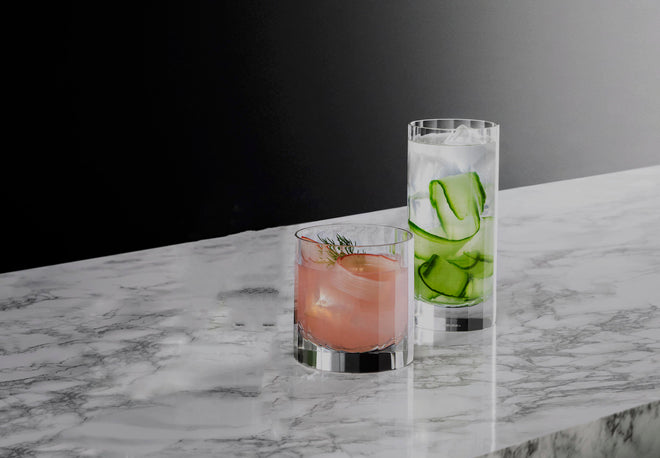
19/10/19
How to Make the Most Perfect Gin & Tonic
Happy International G&T day!
Whilst the origin of Gin itself is questionable (most say it's an adaption of a Dutch Genever) it's undeniable that over time, this beloved spirit has become an iconic British favourite.
But where did the idea of adding Tonic to Gin come from to create our staple cocktail?
In 19th century India, British troops would regularly take quinine, an effective anti-malarial compound, by dissolving it in carbonated water to make a tonic. However as quinine was notoriously bitter, soldiers would mix this with their rations of sugar, water, lime and gin to create what we now know as a G&T. Nowadays the levels of quinine are significantly reduced, and the tonic water occasionally sweetened to avoid it tasting too bitter.
As proud G&T drinking Londoners, we wanted to share with you our favourite 3 London-based gins, and our top tips so you can make The Perfect Gin & Tonic. Over the last few of years, different takes on the classic have been thought up, but the below method with any variation of ingredients will guarantee you a G&T to delight every time.
We should be grateful for Sipsmith: they are after all the reason Gin can be distilled in London again since 1820. Based in leafy Chiswick (jut down the road from us in West London), they use only the finest ingredients to distil their range of gins in house. We're a big fan of their "Sipping Society" - a subscription service allowing you to taste them all! Even the brand spanking new ones before they're on shelves.
Taking inspiration from the Royal Botanic Gardens in Kew (SW London), Dodd's Gin is a true testament to Ralph Dodd, who the brand is named after: a civil engineer with an entrepreneurial spirit, and a true representative of London. Our favourite is the Small Batch Honey Gin which uses honey from local London bees.
On the opposite end of London to us, East London Liquor Company are making some magic in the place where the spirit industry used to call home. We'd recommend trying one of the barrel aged gins- the first of which featured the London Dry Gin aged in new French oak barrels.
Above: Diamond High Ball
Method:
1. Take the pick of your favourite Cut Crystal High ball: Diamond or Fluted
2. Fill this up to the brim with plenty of ice, so it melts slowly. It sounds obvious but the ice should be totally solid, and ideally made with distilled water to avoid any nasty tastes. The larger the cubes the better!
3. Pour in your favourite Gin: for the classic G&T we're likely choose from one of the above. But we'd encourage you to try out all of their variations - they're delicious!
4. Crack open a chilled Tonic Water (we like to use Fever Tree , Double Dutch or London Essence co). For maximum carbonation we'd advise using individual cans or bottles, but admittedly this is a little wasteful so if you do open a full bottle, just make sure you can serve enough G&Ts to use it up on one go!
5. Don't forget to Garnish. For our Classic G&T we like a wedge or two of lime, but definitely worth experimenting with different kinds. Julia Forte from The London Gin Club says "Match your garnish to the specific or highlighting botanicals in the gin. Lime, Rhubarb, or an Olive work well with Dry gins, whilst Grapefruit, Citrus peel, Cucumber and Rose petals work with Floral gins. For a Savoury gin, try Rosemary, Thyme, or Basil with a Cherry tomato"
We would avoid squeezing the garnish over the top as this can sometimes overpower some of the more complex notes that are within each of the gins or tonics. Twisting a citrus fruit peel over the glass can also release some delicious oils over your drink!
Enjoy - and don't forget to tag us in your best-looking G&Ts on Saturday! @richardbrendonstudio
















































